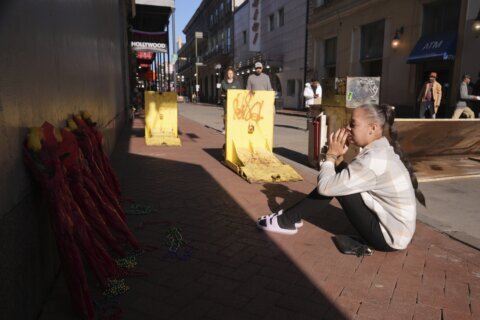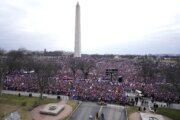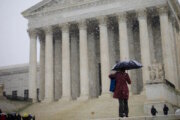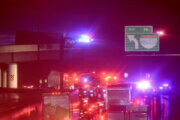With more sightings of the northern lights across the U.S. than usual in recent years, now is an excellent time to make the trek to a Dark Sky Place. Even if you don’t see the rainbow of colors lighting up the night, you will be treated to some of the most spectacular stargazing in the country. DarkSky International has certified the following locations as having the highest quality night sky. The roughly 150 Dark Sky Places in the U.S. fall into five International Dark Sky categories: parks, sanctuaries, reserves, communities and urban night sky places.
Pack your camera, binoculars, telescope, and something comfortable to lay on so you don’t crane your neck, then download a planetarium app like Stellarium Mobile before heading to these light pollution-protected areas for a taste of astrotourism.
Flagstaff, Arizona
Flagstaff was the nation’s first International Dark Sky Community, certified in 2001 by DarkSky International (then called the International Dark-Sky Organization). The city — a pioneer in preventing light pollution — enacted the world’s first outdoor lighting ordinance in 1958. With a population of more than 76,000, Flagstaff faces no small feat in trying to protect its dark sky.
Visitors can marvel at the Milky Way and myriad constellations from the newly opened Marley Foundation Astronomy Discovery Center at Lowell Observatory. Lowell features a rooftop Dark Sky Planetarium and the Giovale Open Deck Observatory, as well as impressive telescopes, including the Pluto Discovery Telescope, 24-inch Dyer Telescope and 24-inch Clark Refractor.
Where to stay: There are plenty of hotels to choose from in downtown Flagstaff near Lowell Observatory, including the Residence Inn Flagstaff.
Moab, Utah
Utah is the predominant state for dark skies, with more than two dozen Dark Sky Places. The city of Moab is an International Dark Sky Community that draws visitors as a haven for outdoor recreation. The area encompasses the Arches and Canyonlands national parks, as well as the Natural Bridges and Hovenweep national monuments. The lighting ordinances encourage practices that minimize light pollution, a big priority for Dark Sky Places; the Moab area even offers residents financial assistance to retrofit their lighting fixtures.
Where to stay: Moab is one of five destinations with DarkSky-approved lodging at Under Canvas Moab, which offers seasonal glamping with upscale amenities and canvas tents. Book one of the Stargazer tents for access to sky-viewing windows, attend a guided astronomy walk or lecture, and utilize the camp’s telescopes to explore the wonders of the night sky. Moab also has a Michelin two-key resort called ULUM Moab Luxury Resort for ultra-chic glamping.
Greater Big Bend International Dark Sky Reserve, Texas
This 9 million-acre area in Texas and Mexico is the largest protected Dark Sky Place is the world. It encompasses Big Bend National Park and Big Bend Ranch State Park Complex — both are Dark Sky Parks that offer night sky interpretive programs — as well as Black Gap Wildlife Management Area, which is a Dark Sky Sanctuary. Located in the Chihuahuan Desert, this reserve can be very hot or cold, so dress appropriately.
For the best star viewing, go during a new moon phase, when the moon is below the horizon. There are several places that offer high-power telescopes for public use, including the McDonald Observatory, which is home to the Hobby-Eberly Telescope, one of the largest optical telescopes in the world.
Where to stay: The Marathon Motel, RV Park & Skypark features four duplex cabins, 29 full RV hookups and secluded camping. The big draw is its educational nightly sky parties hosted by Dark Skies Texas with access to two observatory-grade reflector telescopes and telescope binoculars. For a private encounter, book the Big Bend Observatory vacation rental that features a cabin and roll-top observatory with a telescope, a SkyDeck and binoculars. If you prefer glamping, head to The Summit at Big Bend to sleep in one of the Stargazing Domes.
Oregon Outback, Oregon
The Oregon Outback, which stretches across 2.5 million acres, is the world’s largest International Dark Sky Sanctuary, with future plans to expand to 11.4 million acres. The Oregon DarkSky Network distributes Night Sky Adventure Kits that can be checked out through regional libraries and hosts sky parties with astronomy experts. The area is also home to the Indigenous Northern Paiute people and features ancient petroglyphs that can be explored during the day.
Where to stay: The remote area has numerous campgrounds, such as the Oregon Outback RV Park. One of the closest cities is Lakeview — about 45 miles north — where you’ll find hotels such as the Best Western Skyline Motor Lodge.
Grand Canyon National Park, Arizona
It’s probably no surprise that the iconic Grand Canyon National Park is a certified Dark Sky Park. The park was awarded this status in 2019, during its 100th anniversary, after retrofitting more than 5,000 light fixtures. The remote area attracts around 6 million annual visitors who come to witness and explore the massive canyon and be awed by the celestial activity.
The National Park Service encourages visitors to visit after dark to witness thousands of stars with the naked eye. The park’s Dark Skies Program features star parties, laser-guided constellation tours, ranger-led lectures and an astronomer in residence program.
Where to stay: Under Canvas has a glamping resort located around 30 miles from the South Rim. There is also a hotel, lodges and cabins inside the park, such as the historic El Tovar Hotel.
Paonia, Colorado
One of the newest International Dark Sky Places is Paonia, Colorado, which was certified in September 2024. The small town of Paonia is surrounded by a variety of public lands, including a national forest, park, recreation area and conservation area, which keeps the light pollution to a minimum. During the day, the area is known for its farms, fruit and wine, but at night the Milky Way is the main attraction.
Where to stay: Stay in town at the Bross Hotel Bed & Breakfast or choose the River Village RV Park (note there is a two-night minimum and guests must be 14 and older).
Anza-Borrego Desert State Park, California
As the country’s second-largest state park, Anza-Borrego is home to slot canyon hiking, wind caves, picturesque overlooks, art sculptures and phenomenal stargazing. Located about 75 miles northeast of San Diego, the park is part of the Mojave and Colorado Deserts UNESCO Biosphere Reserve and is designated as a Dark Sky Park. Within the park is the town of Borrego Springs, California’s first Dark Sky Community; you can study the stars with acclaimed astronomer Dennis Mammana through Borrego Night Sky Tours.
Where to stay: The Palms at Indian Head in Borrego Springs is a midcentury modern boutique hotel that was once a favorite spot for classic Hollywood stars, such as Will Rogers and Marilyn Monroe.
[Read: 26 Top Things to Do in California]
Palos Preserves, Illinois
Palos Preserves is the largest Urban Night Sky Place in the world and one of the oldest and largest conservation districts in U.S. It is part of the 70,000-acre Forest Preserves of Cook County, which offers public astronomy events such as full moon nature walks. At the Adler Planetarium’s Doane Observatory, only about 20 miles away in Chicago, visitors can see stars and planets that are trillions of miles away by peering through a PlaneWave CDK24 telescope.
Where to stay: Enjoy the stars all night by staying in a tent, RV or cabin at Camp Bullfrog Lake.
Joshua Tree National Park, California
Located about 130 miles east of Los Angeles, Joshua Tree National Park offers SoCal residents the chance to escape the crowded cities and soak up the stars in the Mojave and Colorado deserts. The eastern side of this Dark Sky Park, which includes Pinto Basin, has the least amount of light pollution since it is the farthest distance from Greater Palm Springs, but it is only accessible via off-trail backpacking.
There are four designated stargazing areas in the park with parking available: Quail Springs, Hidden Valley, Cap Rock and Ryan Mountain. Ranger-led astronomy programs are offered throughout the year, in addition to a monthly program at the Sky’s the Limit Observatory and Nature Center in Twentynine Palms.
Where to stay: Embrace the desertscape during the day and night at the Airstream glamping resort AutoCamp Joshua Tree. Available experiences include full moon hikes, astronomer-led stargazing, new moon sound baths and more.
Cosmic Campground, New Mexico
Camp among the stars at this Dark Sky Sanctuary in New Mexico, where the closest artificial light is more than 40 miles away in Arizona. The campground was the first International Dark Sky Sanctuary in North America, as well as the first located on National Forest System lands. It spans 3.5 acres of the 3 million-acre Gila National Forest — the country’s first designated wilderness. For best star viewing, use a red filter over your flashlight.
Where to stay: The campground is primitive with only a pit toilet, but it does have four concrete telescope pads. No reservations are necessary.
Massacre Rim Wilderness Study Area, Nevada
This remote area, with a population of only about 800, has one of the darkest skies in Nevada. It is located within the traditional territory of the Northern Paiute and features numerous prehistoric petroglyphs. There is no cell service in the area, and four-wheel-drive vehicles are recommended. Visit between mid-July and mid-August, when the Perseid meteor shower is in full force, to see dozens of shooting stars. There’s also a small ghost town nearby called Vya.
Where to stay: Dispersed camping is permitted — or travelers can stay at the Super8 by Wyndham Alturas, about 60 miles away, but the drive can take up to two hours.
Dinosaur National Monument, Colorado and Utah
You’ll find not only dark skies at Dinosaur National Monument but also, as its name suggests, dinosaur remains. Play the role of Indiana Jones as you explore some of the 800 paleontological sites in the area and see some of the world’s most well-preserved dinosaur fossils. After the sun goes down, witness the stars as they once were when dinosaurs roamed the earth. Park rangers will often lead lectures about the night sky and offer telescopes for visitors to use.
Where to stay: There are six campgrounds located within the park. Otherwise, travelers can stay in a nearby town at a hotel such as Microtel by Wyndham Vernal / Naples, about 15 miles east.
Craters of the Moon National Monument, Idaho
What better place is there to see the moon than at Craters of the Moon National Monument? The otherworldly landscape was formed by volcanic eruptions roughly 20,000 years ago. Visitors to this Dark Sky Park can explore lava tubes, hike through a crater, see spatter cones and photograph molds of ancient trees.
After the sun sets, the sky comes to life with thousands of twinkling stars. Whether you are new to astronomy or an experienced astronomer, attend one of the park’s star parties, astronomy programs or constellation tours. You’ll get to share your passion with others, learn from the park rangers, and utilize high-powered telescopes and binoculars to get an up-close look at the universe.
Where to stay: Pitch a tent at the Lava Flow Campground or book a hotel in picturesque Sun Valley, about 65 miles northwest, such as the accommodations at Sun Valley Resort.
Why Trust U.S. News Travel
Sharael Kolberg is a U.S. News & World Report contributor who loves looking up at the stars and even studied celestial navigation as an undergrad at the University of Hawaii. As a SoCal resident, she is fortunate enough to live near many Dark Sky Places, including Anza-Borrego Desert State Park and Joshua Tree National Park. Kolberg used her firsthand knowledge and research skills to curate this list of the darkest skies in the U.S. for stargazing.
You might also be interested in:
— The Best National Parks in the U.S.
— The Best Places to See the Northern Lights
— The Best National Parks in California
More from U.S. News
The 18 Best Places to See the Northern Lights
How to See the Northern Lights in Iceland in 2024
How to See the Northern Lights in Alaska in 2024
13 Darkest Skies in the U.S. for Stargazing originally appeared on usnews.com
Update 11/26/24: This article was published at an earlier date and has been updated with new information.







